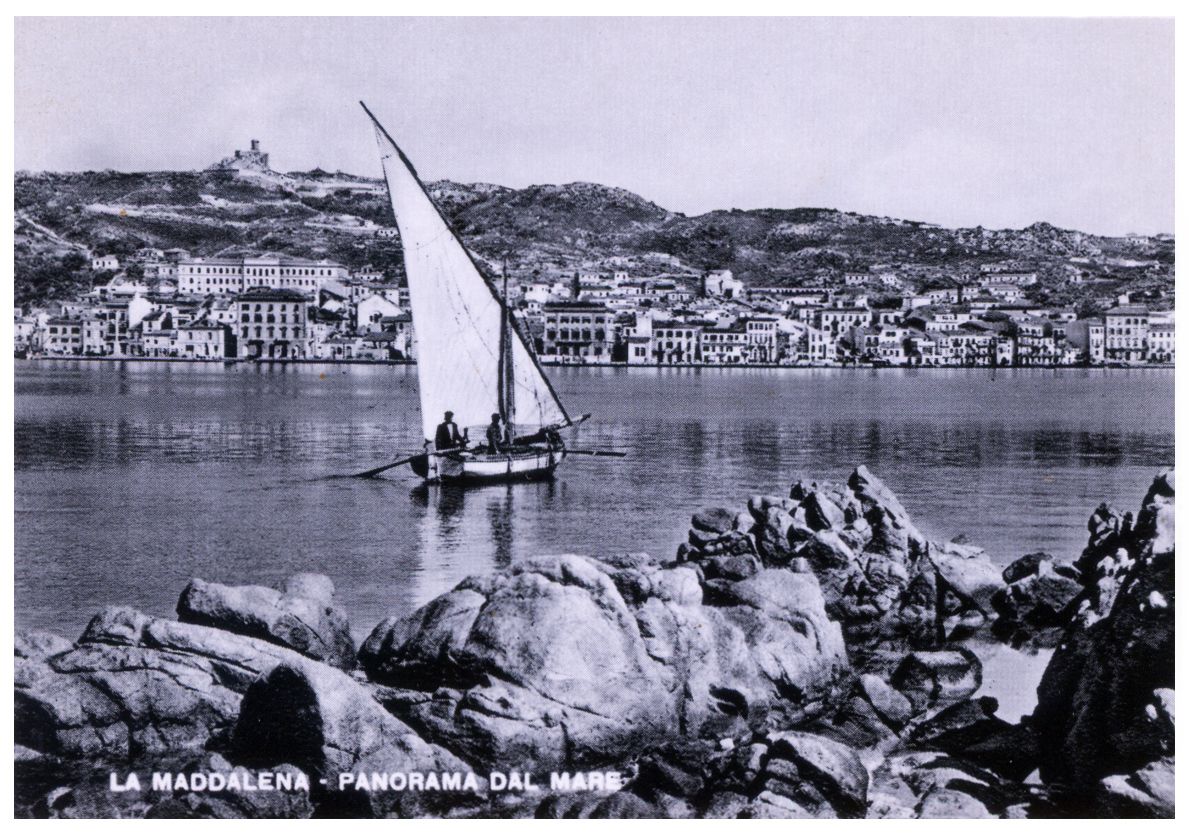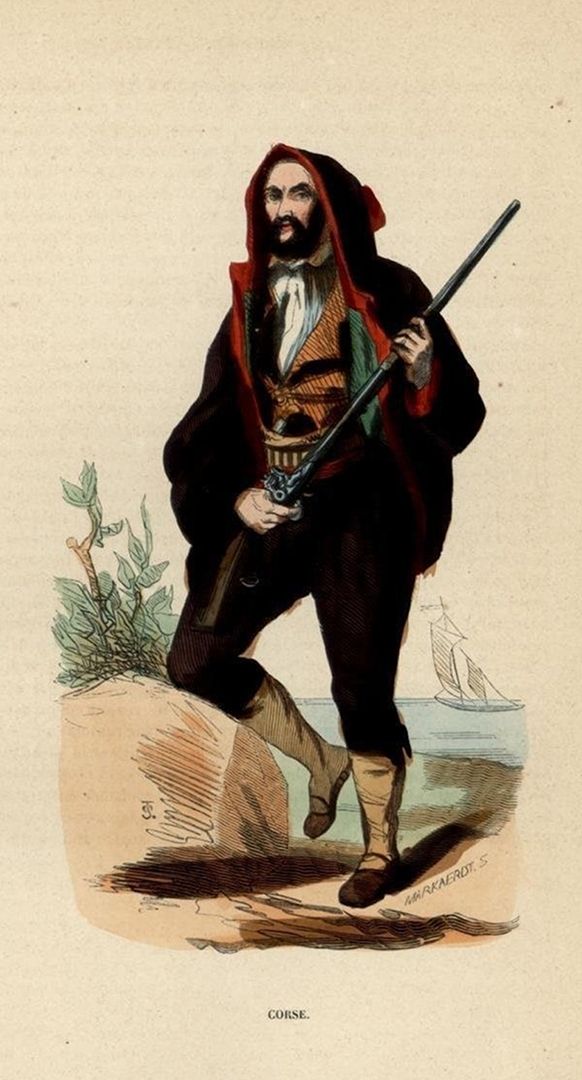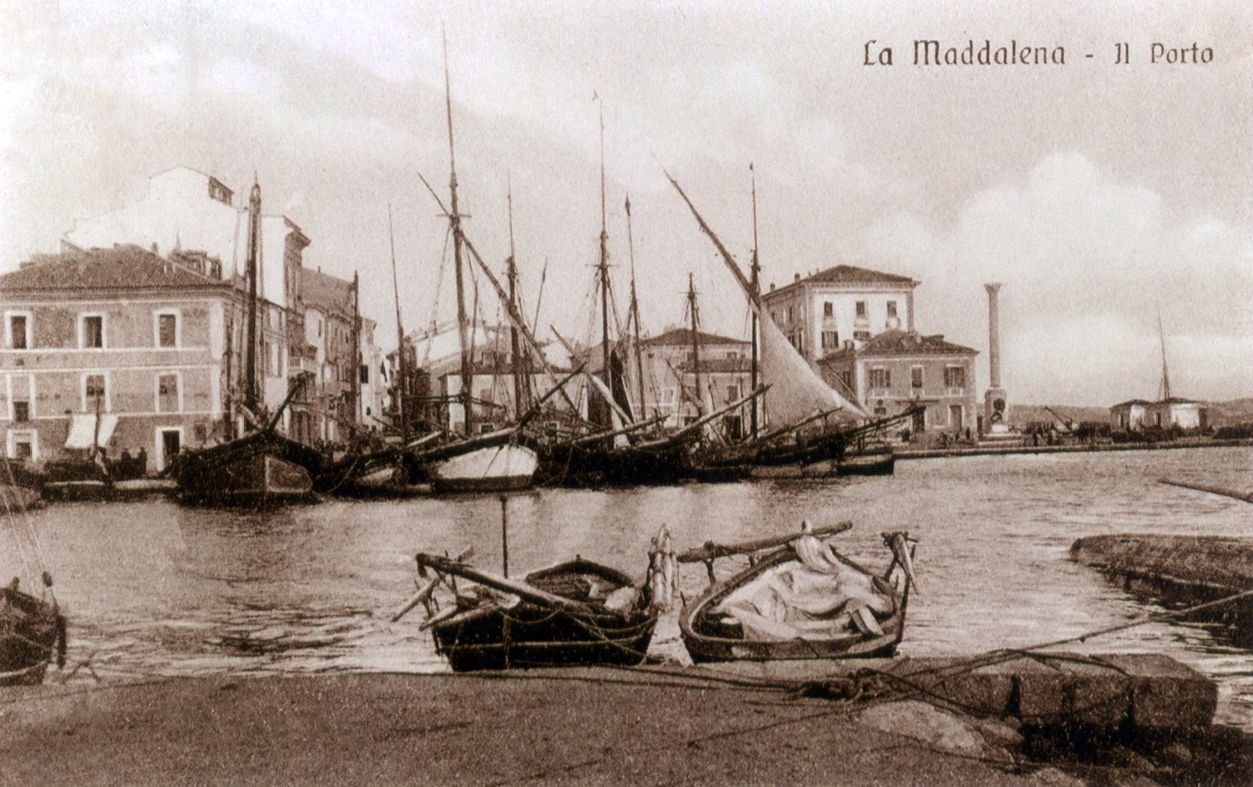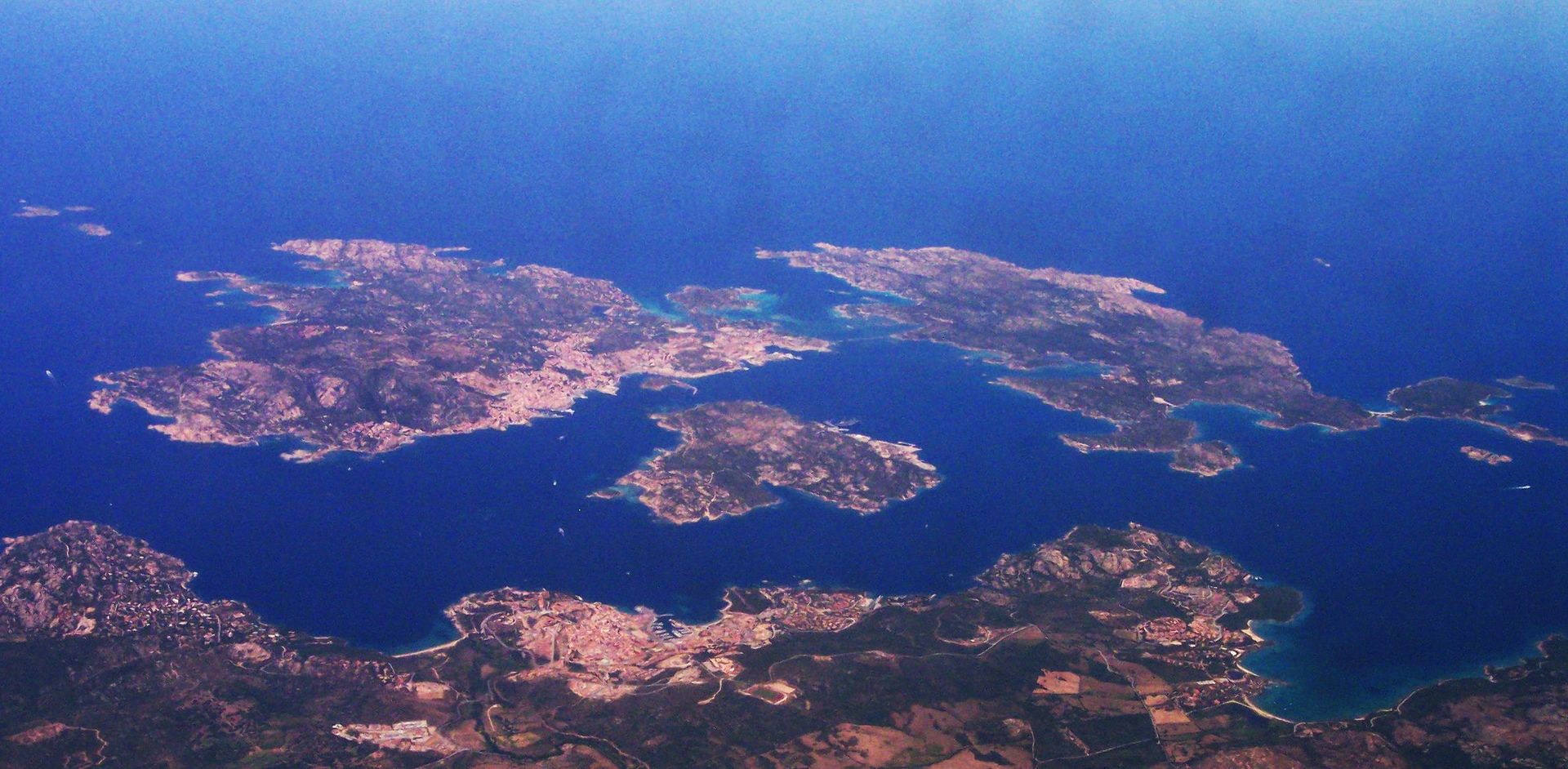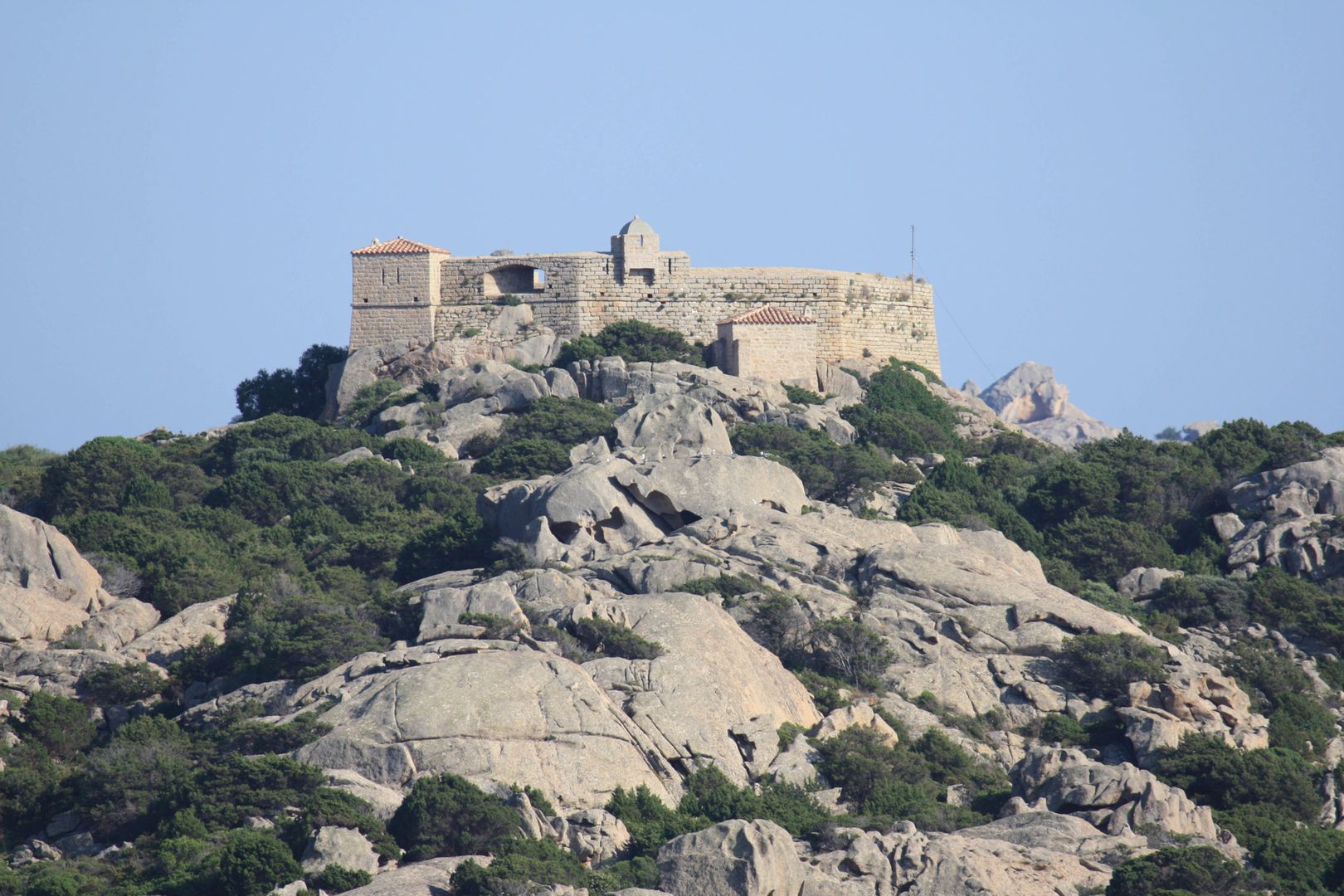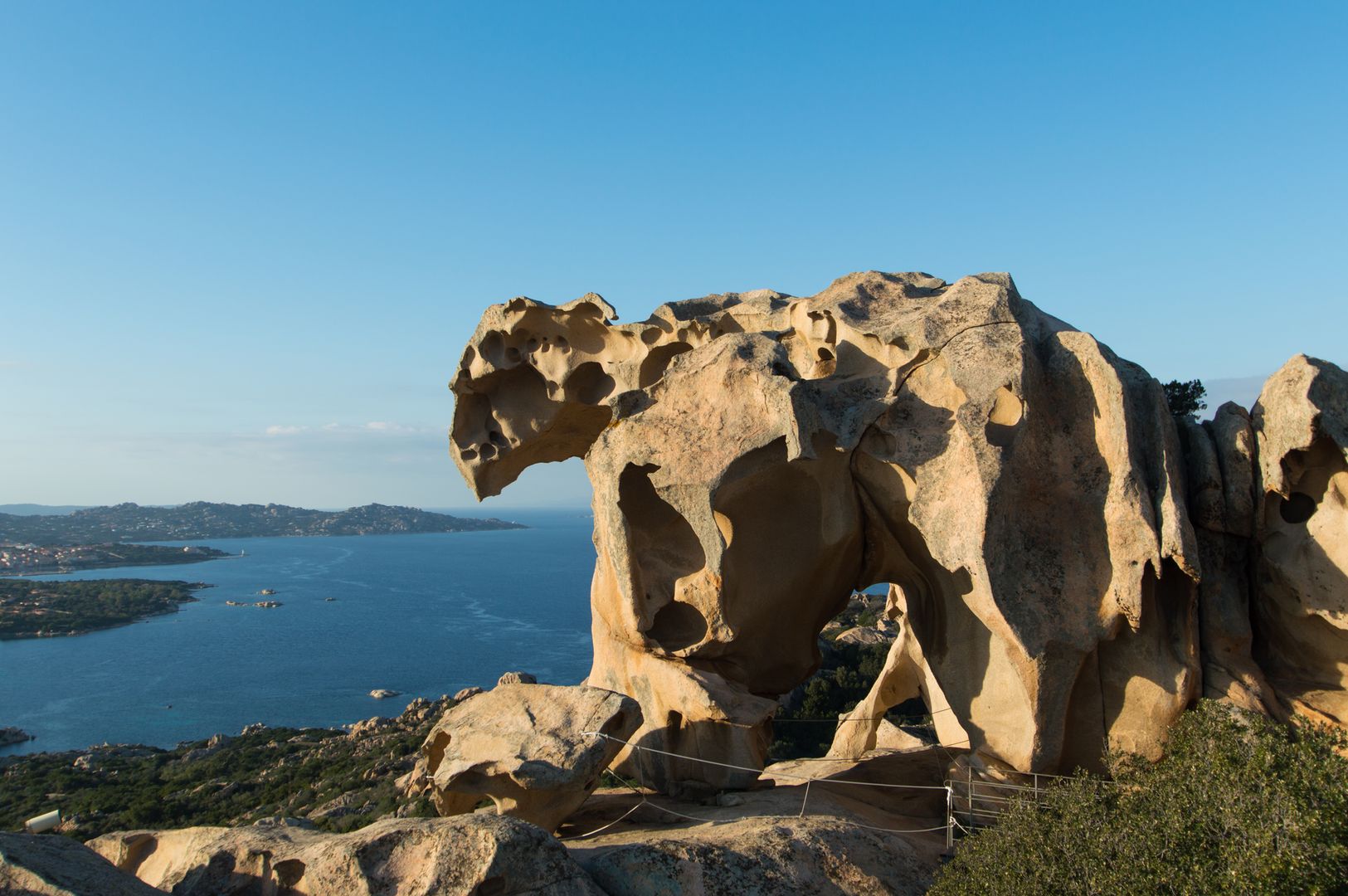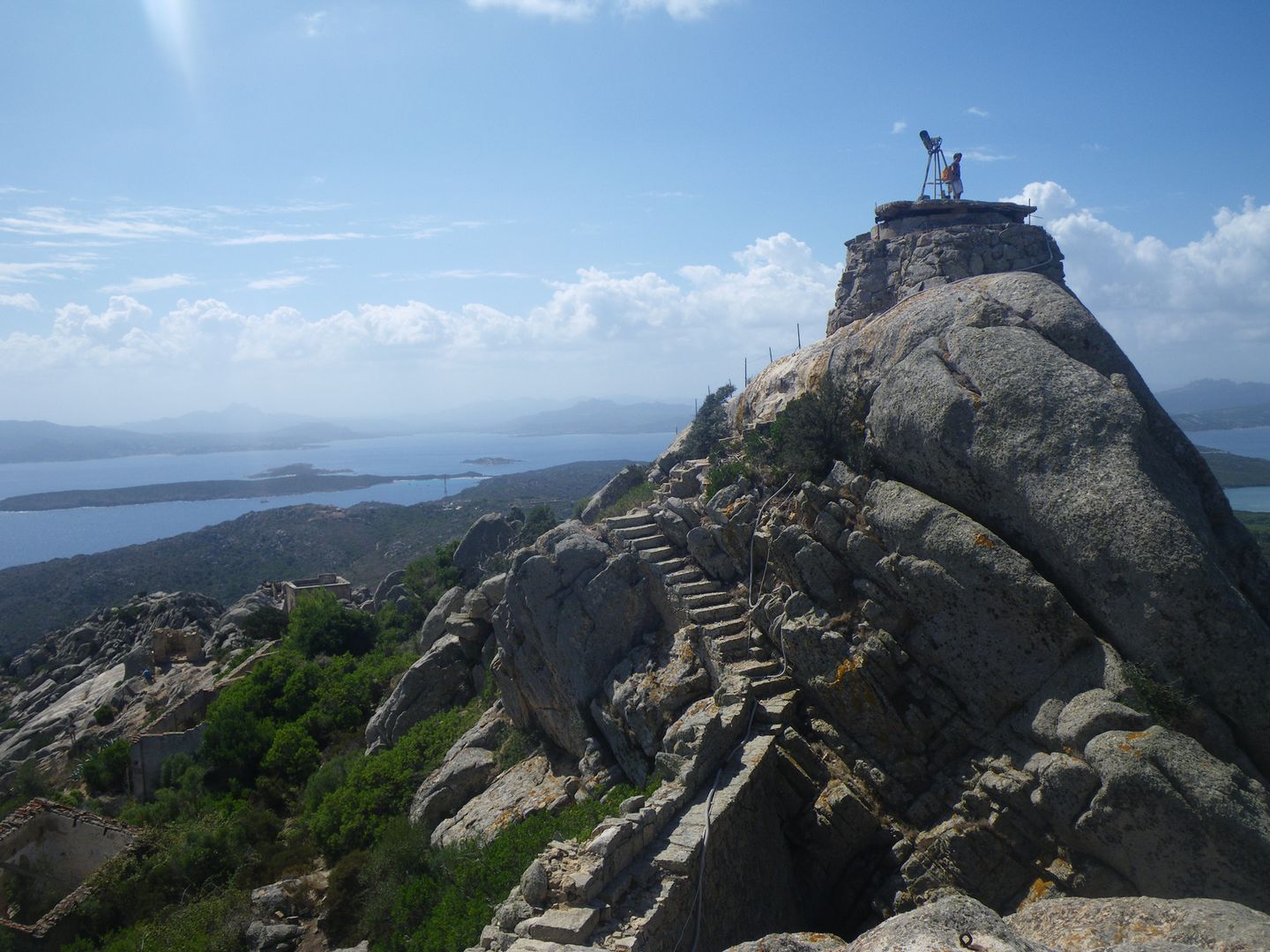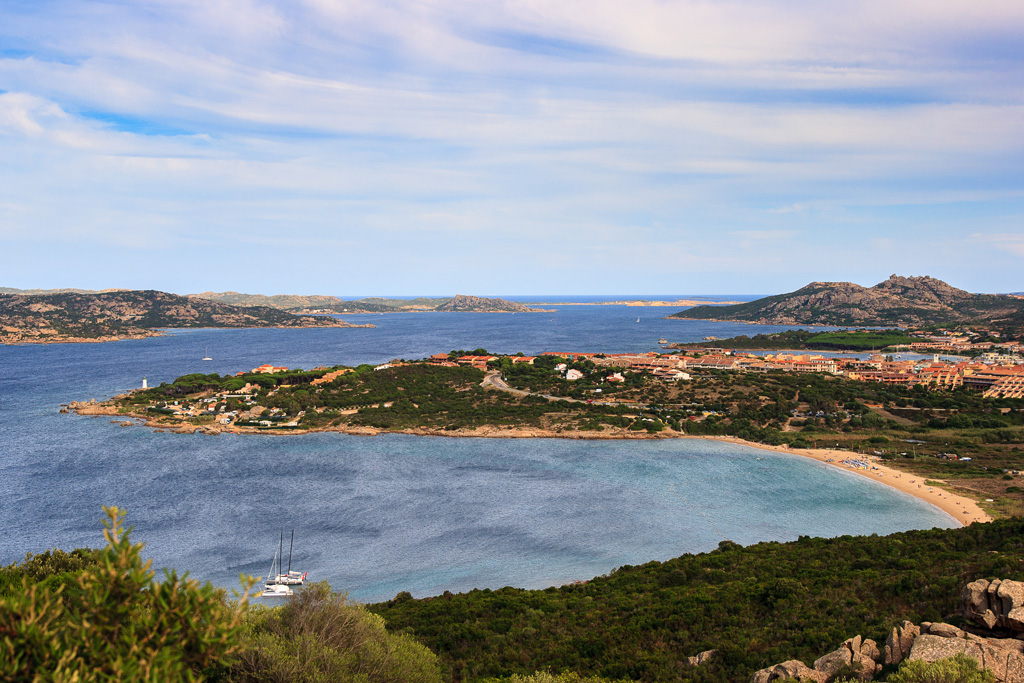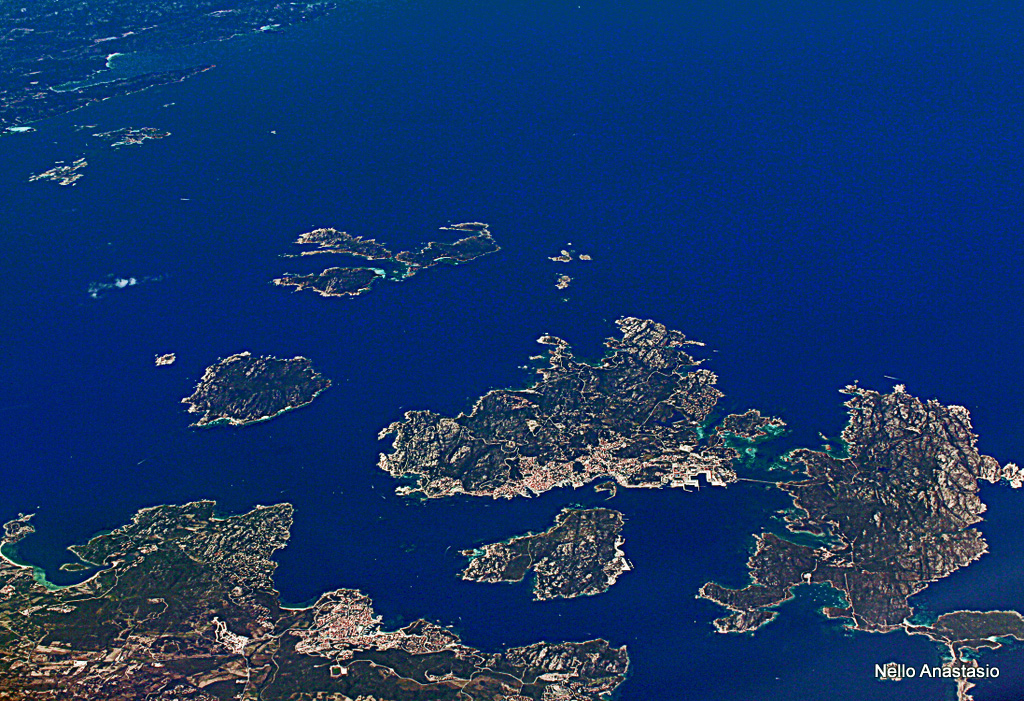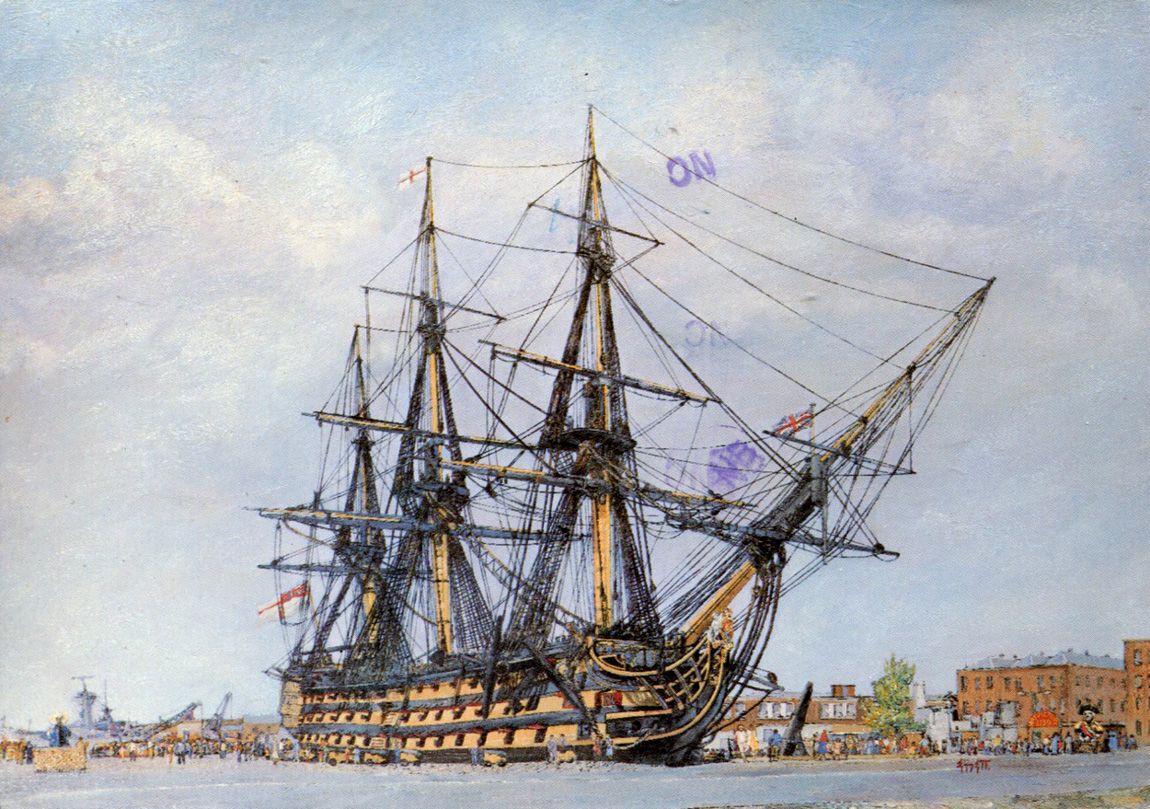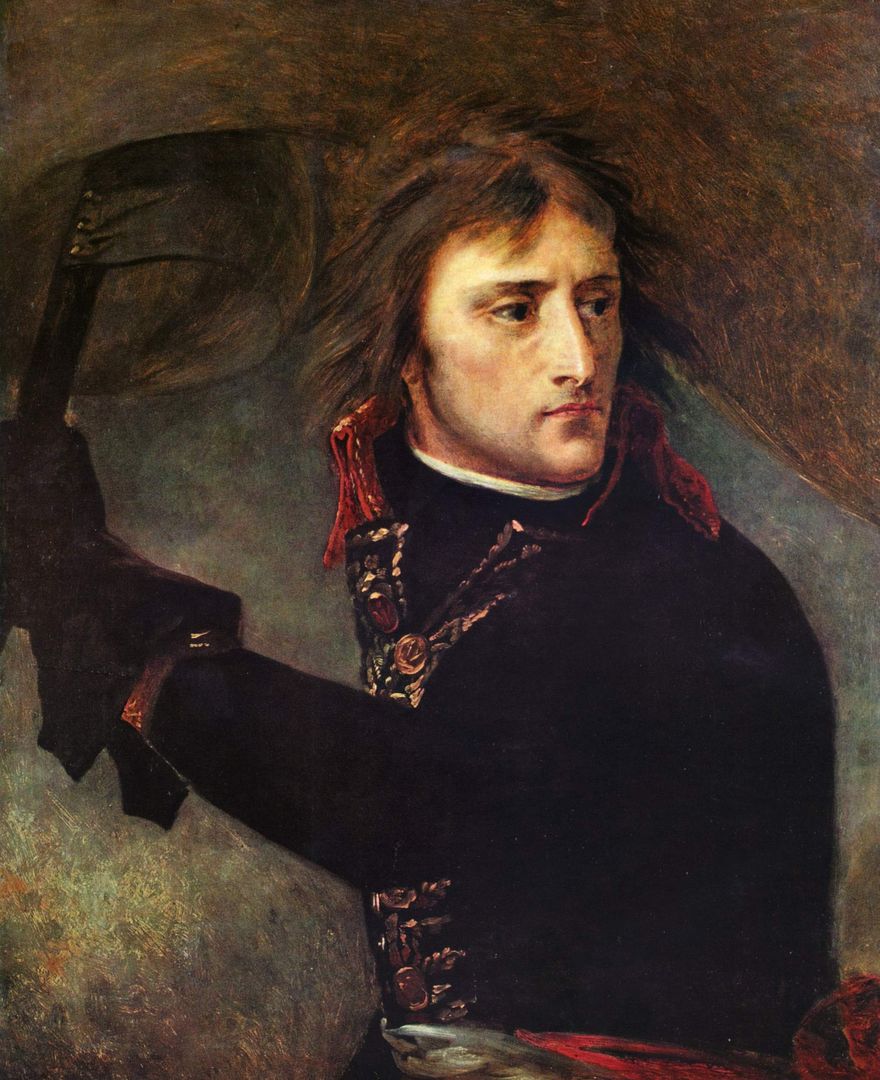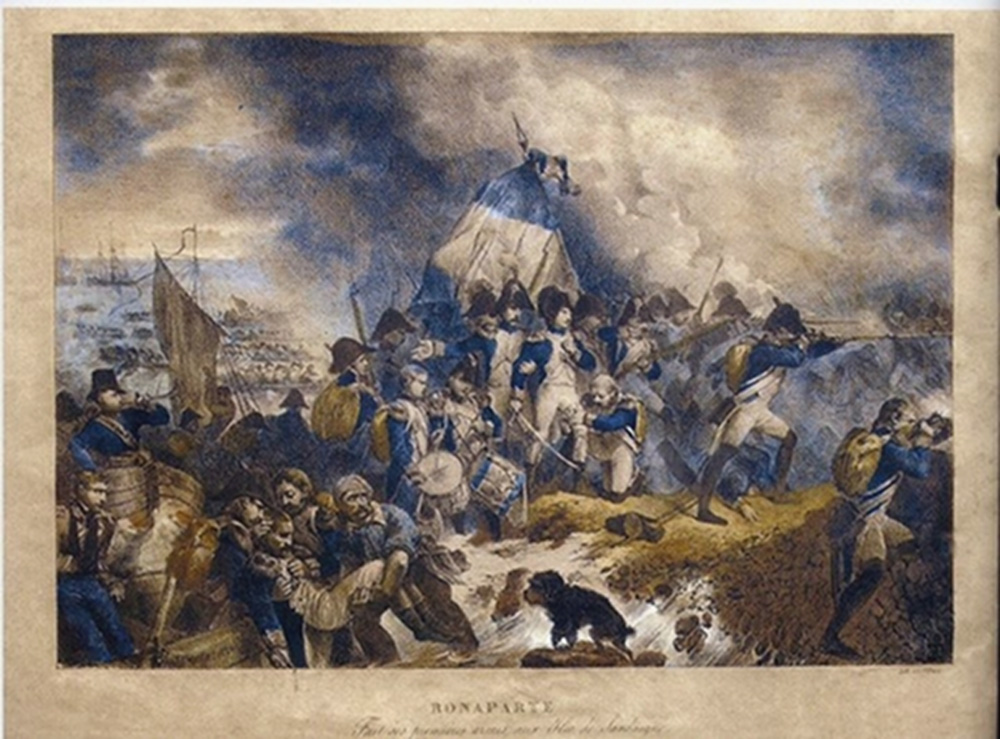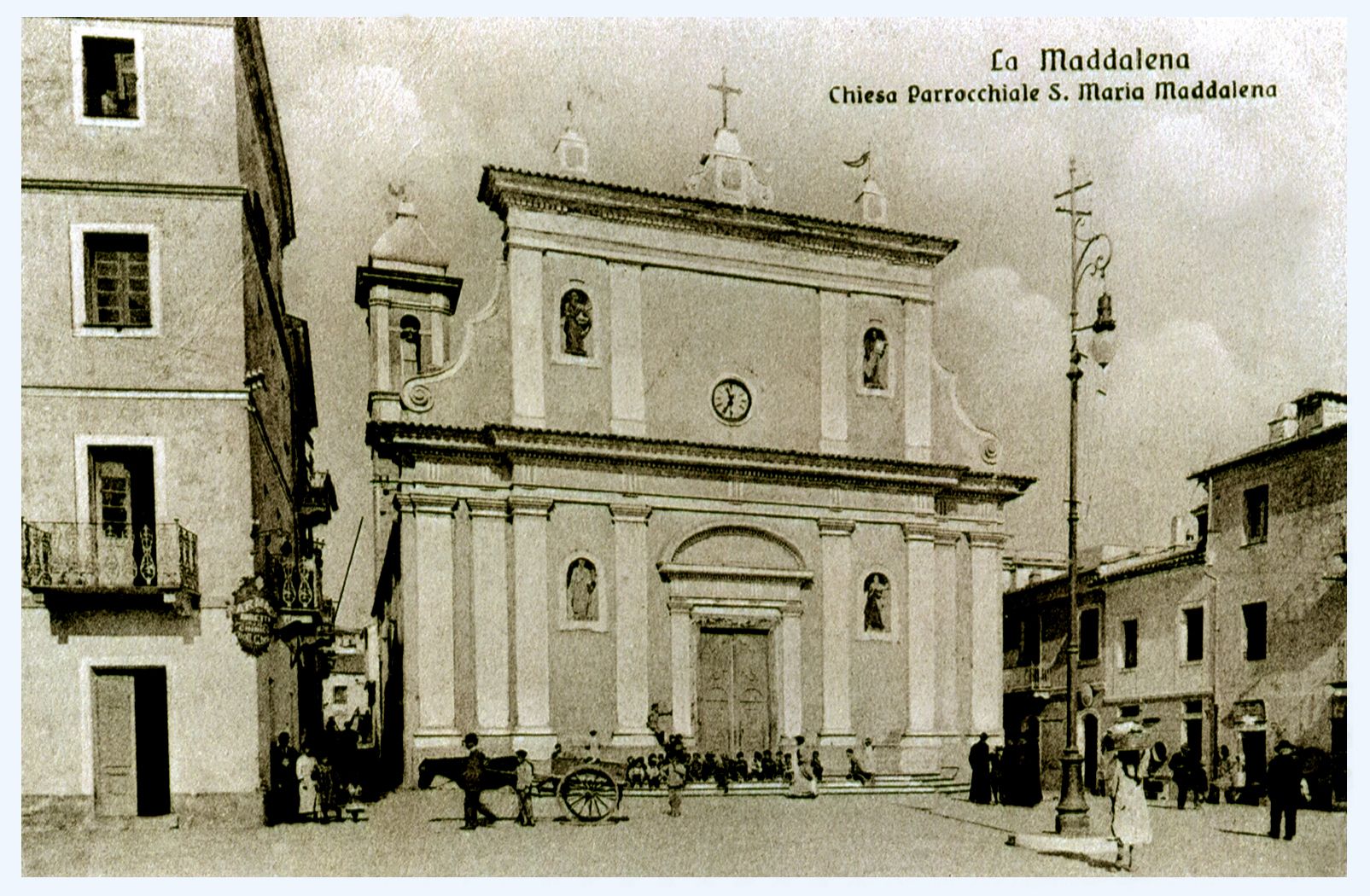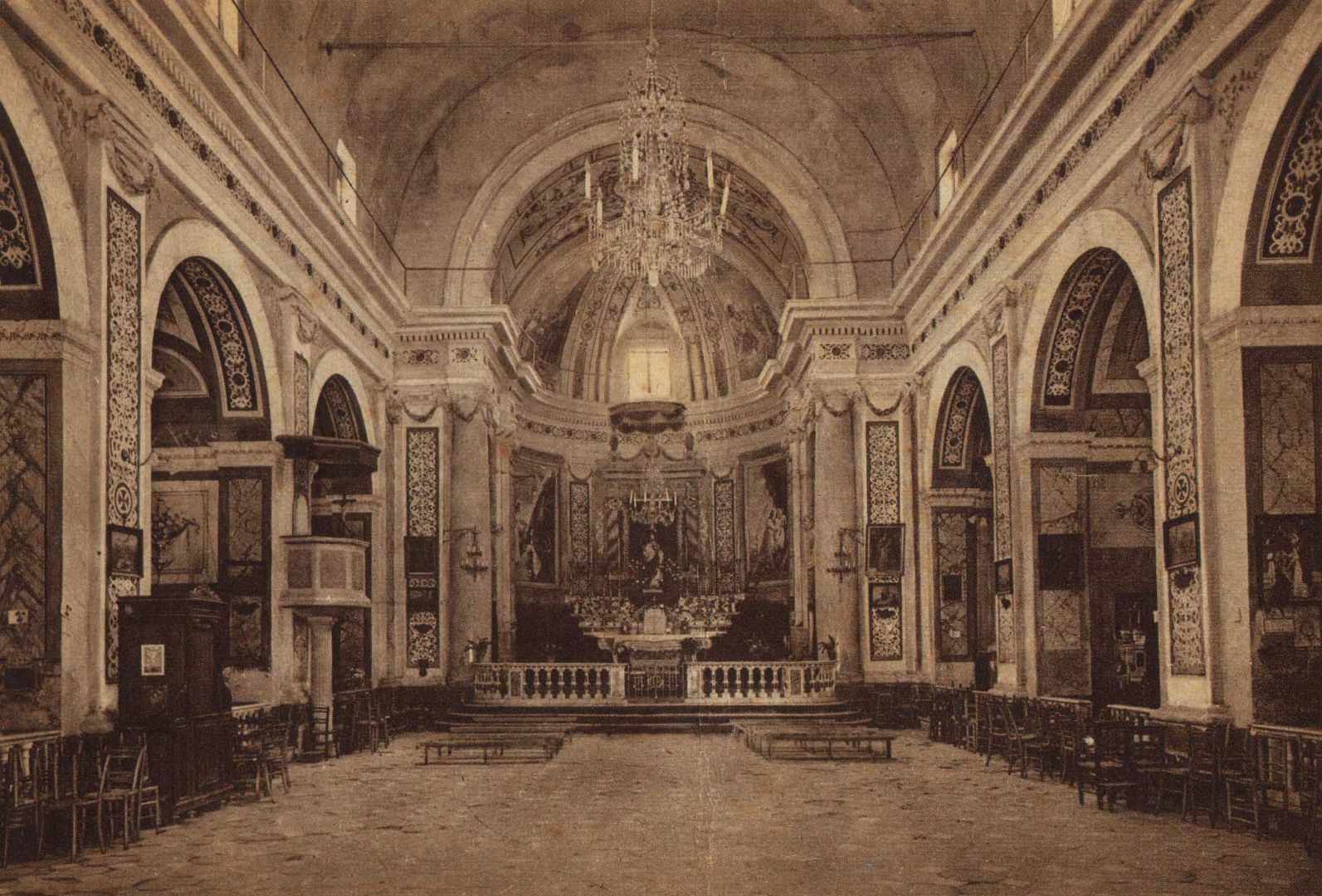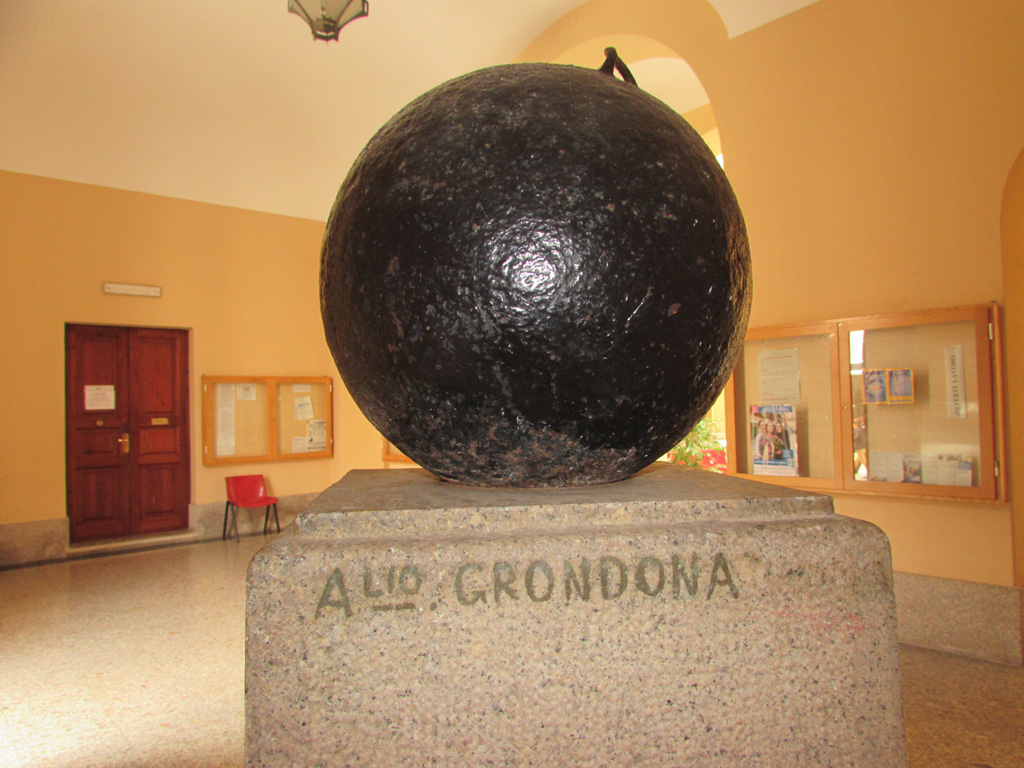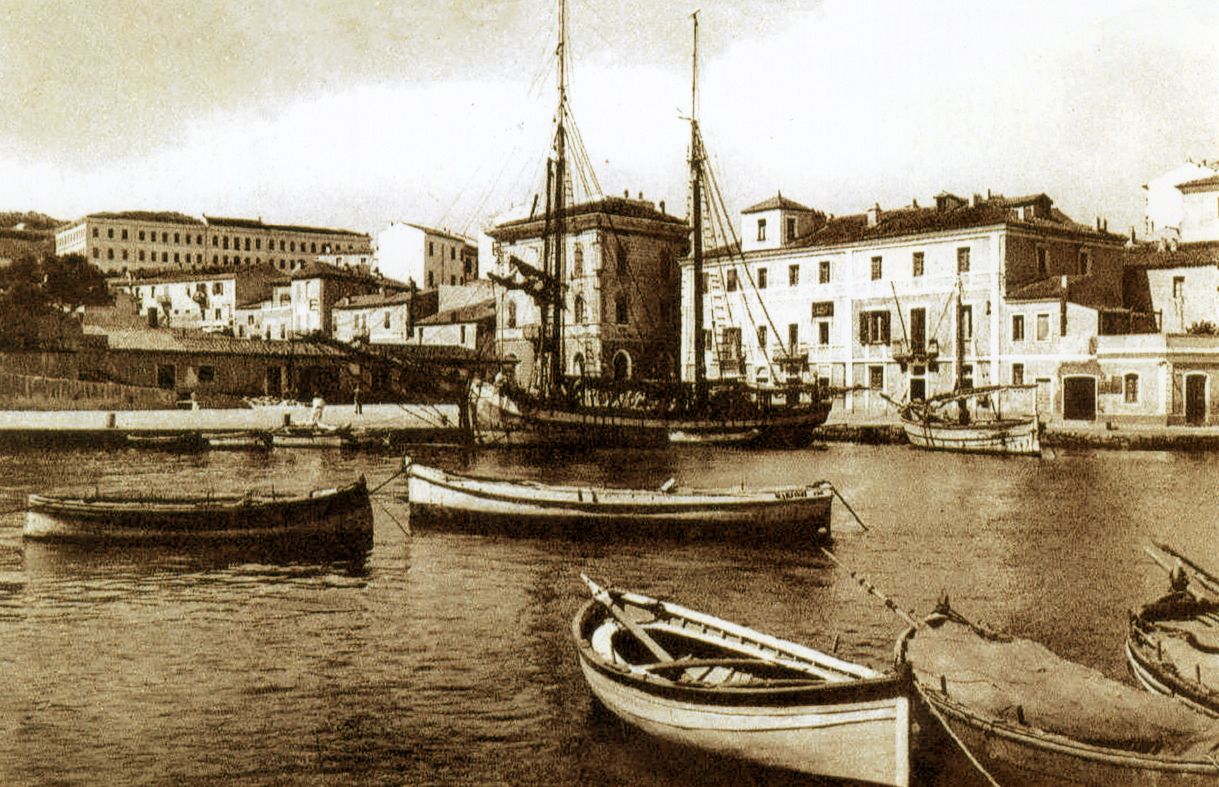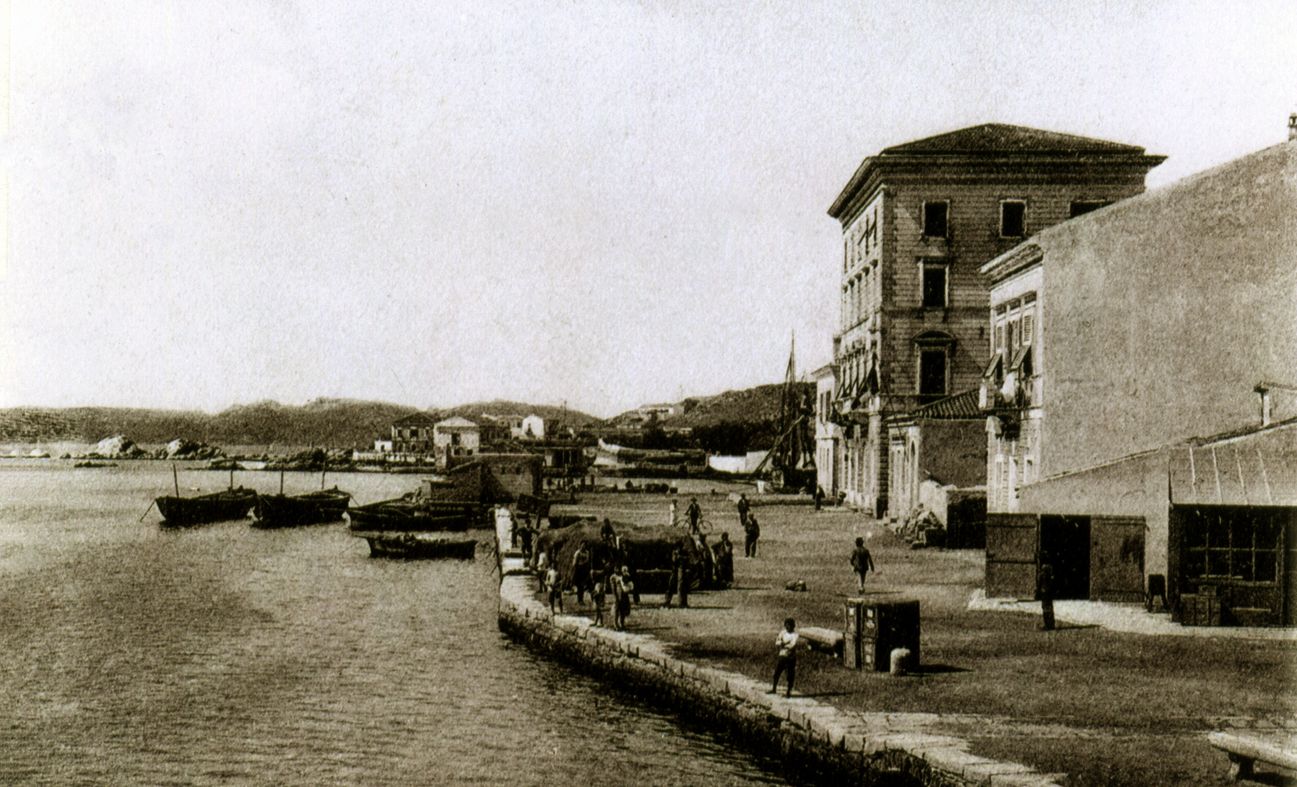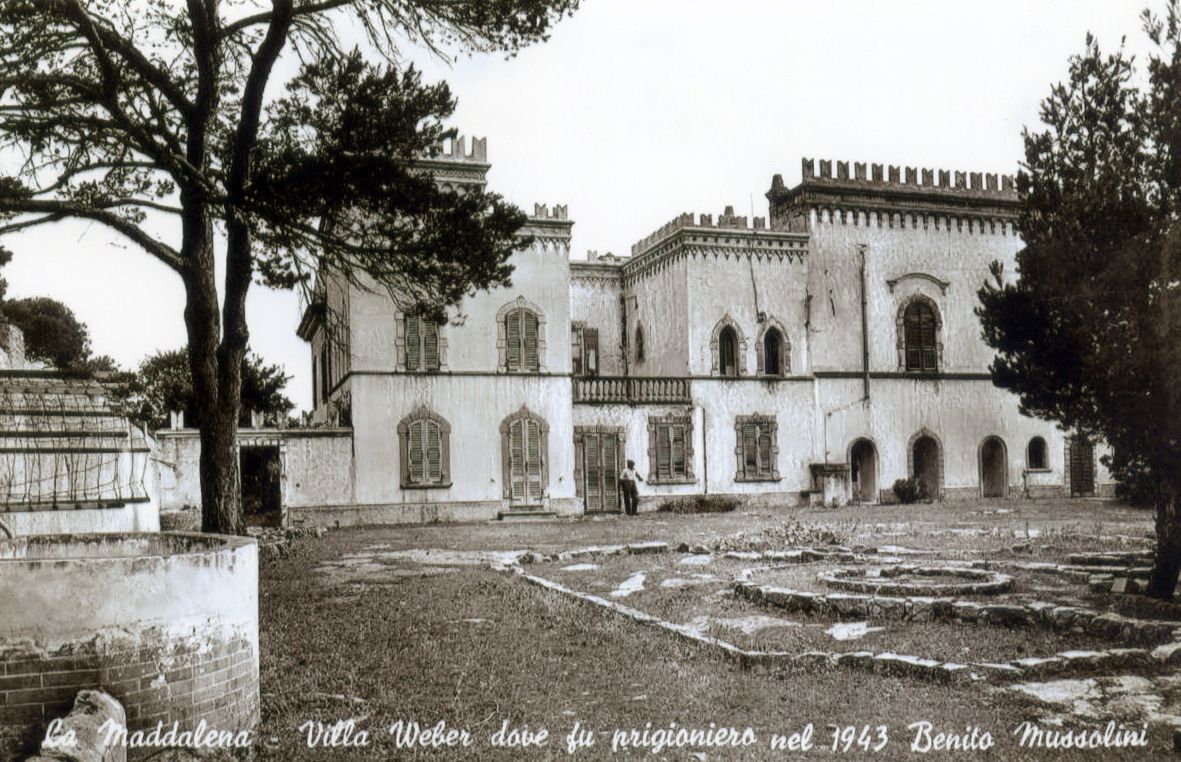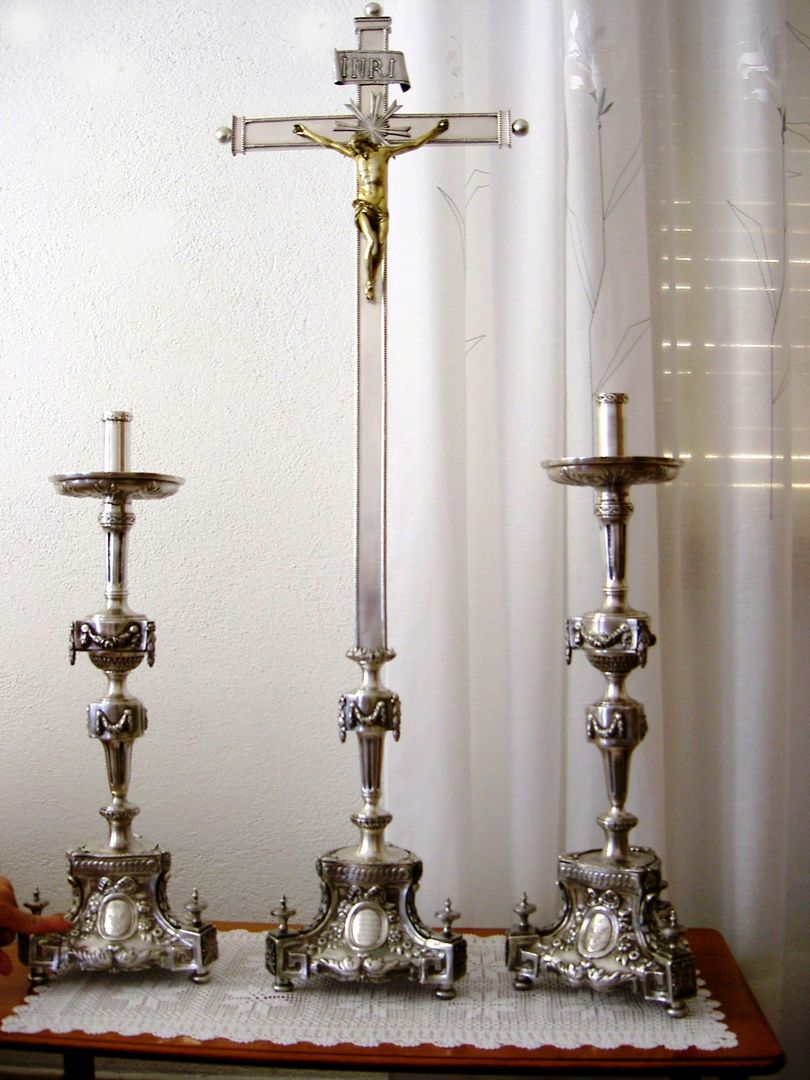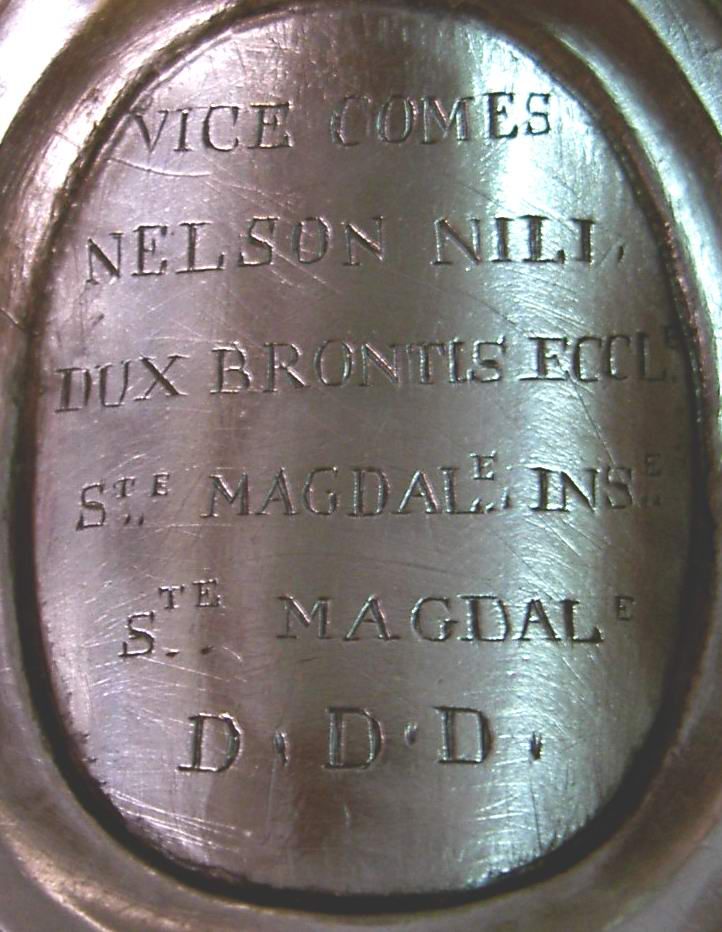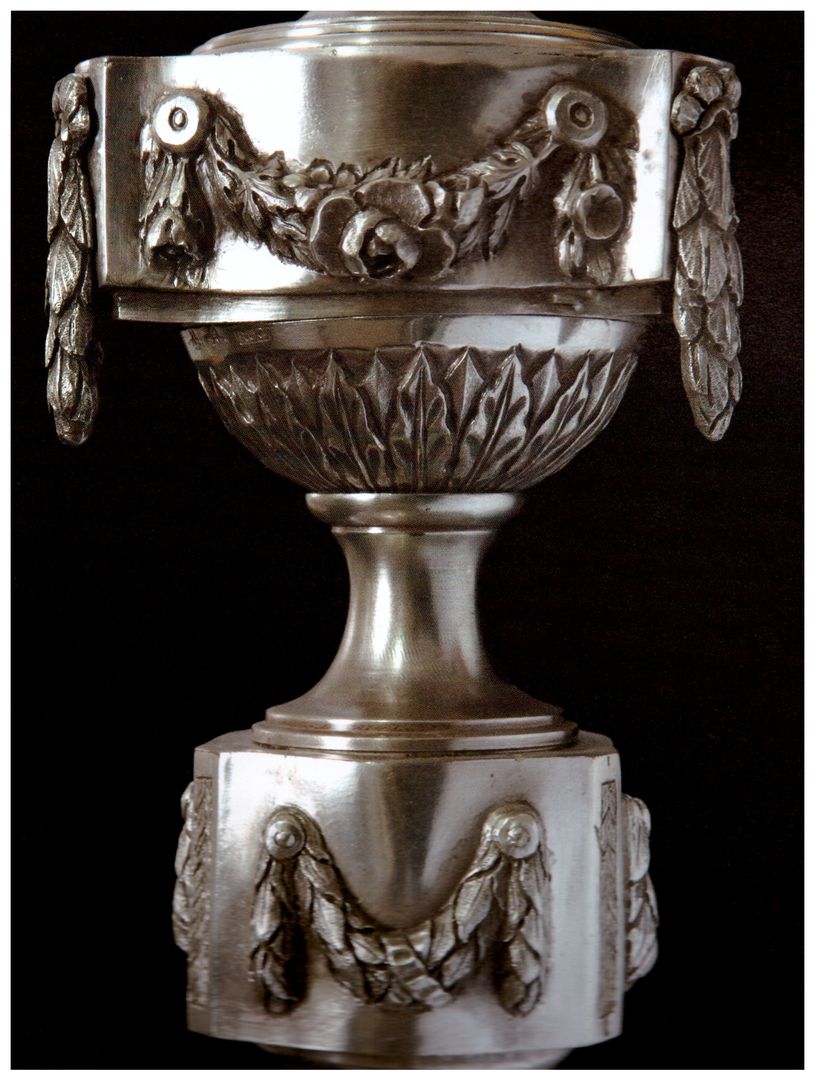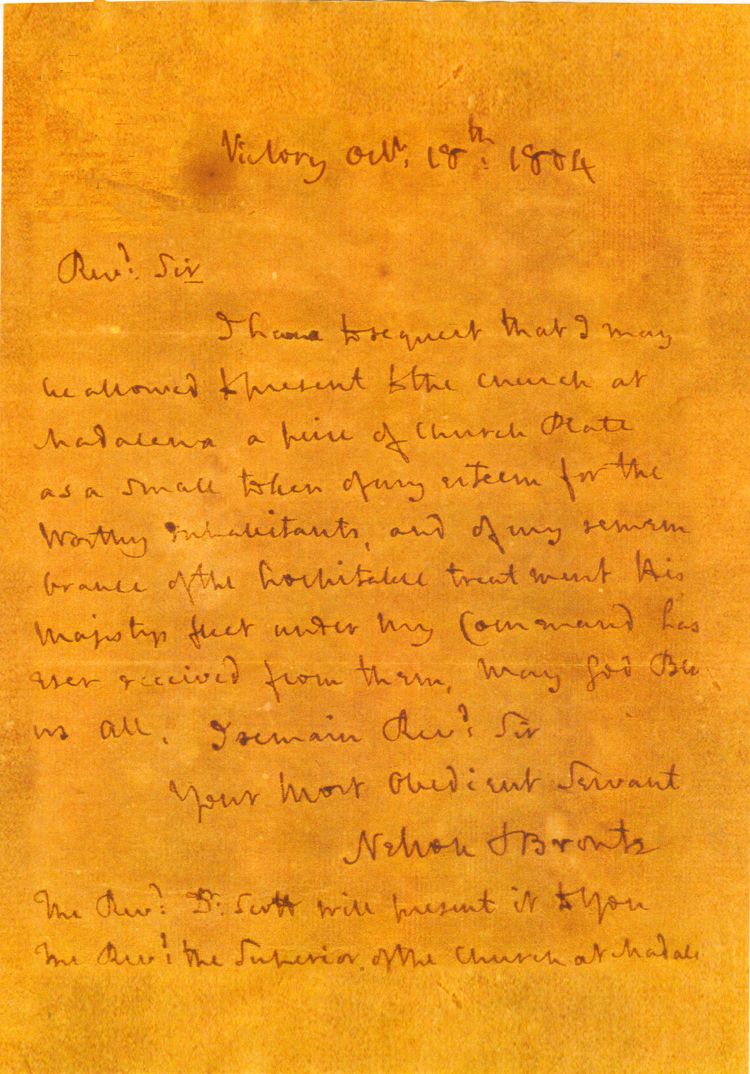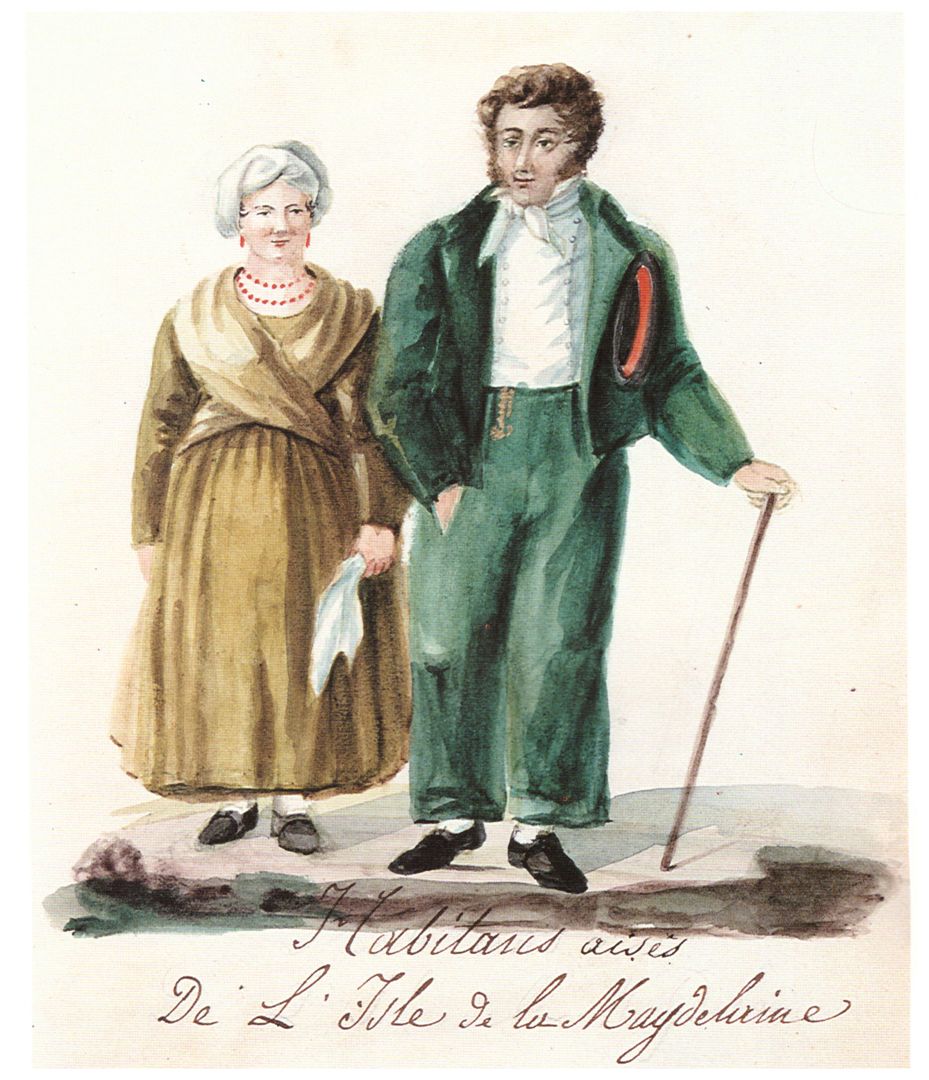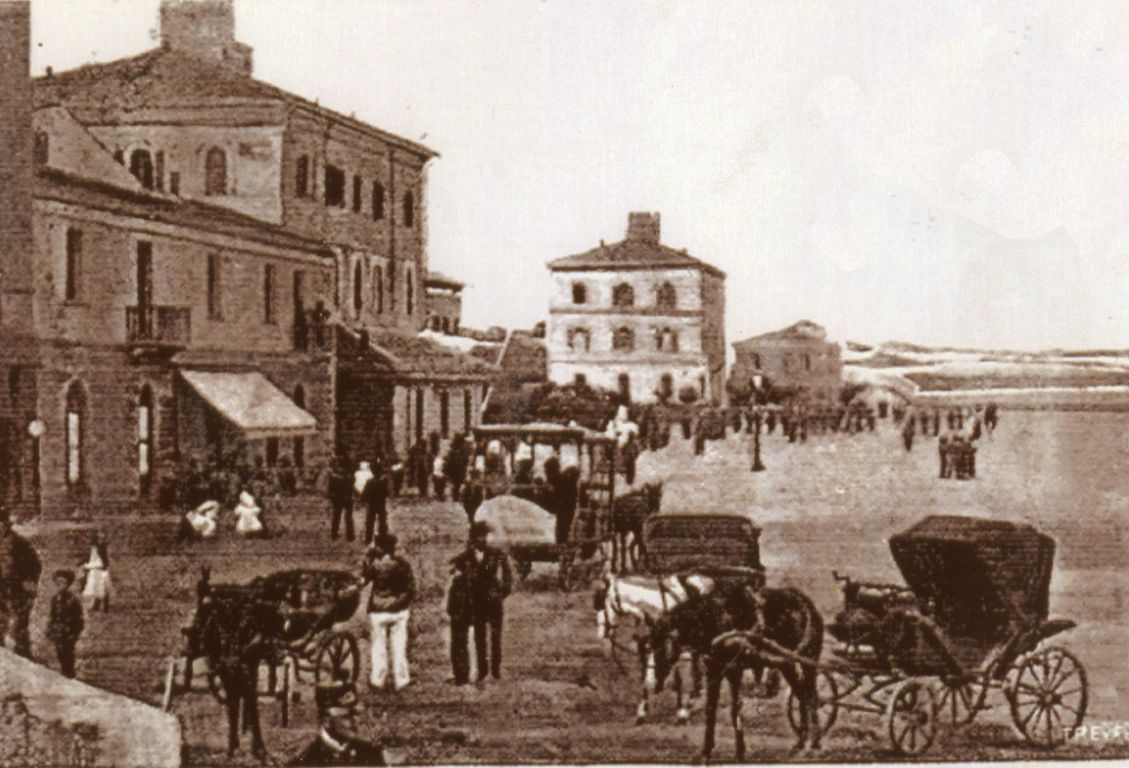LA MADDALENA
by Thomas Forester
Rambles in the islands of Corsica and Sardinia
London 1858; 1861
Longman. Brown, Green, Longmans, and Roberts
in italian: ![]()
Our course therefore was shaped for the latter, though twice the distance from shore to shore. The island of La Madelena, the Insula Ilva, or Phintonis, of the Romans, is about eleven miles in circumference. Till about a century ago it was only inhabited or frequented by shepherds, natives of Corsica, who led a nomad life, and by their constant intercourse with Corsica and Sardinia, and by intermarriages with natives of both, formed a mixed but distinct race, as the Ilvese are still considered.
The town of La Madelena was only founded in 1767, some Corsican refugees being among its first settlers; but from its fine harbour, the healthiness of its site, and its convenience for commerce with Italy, it rapidly became a place of considerable population and trade.
“If we could possess the island of Sardinia,” he says, in a letter to Lord Hobart, ‘‘we should want neither Malta nor any other island in the Mediterranean. This, which is the finest of them, possesses harbours fit for arsenals, and of a capacity to hold our navy, – within twenty-four hours’ sail of Toulon, – bays to ride our fleets in, and to watch both Italy and Toulon.”
In another letter, he says:
– “What a noble harbour is formed by these islands! The world cannot produce a finer. From its position, it is worth fifty Maltas.” This opinion we find repeated in a variety of forms, and with Nelson’s characteristic energy of expression […].
It was no sooner acknowledged on board the “Victory” than the responding one appeared, “Weigh immediately!” The scene of excitement and confusion ensuing the sudden departure and interruption of festivities may be easily conceived. It was a dark wintry evening; but the suddenness of the order to get under way was equalled by the skill and courage with which it was executed.
The passage is so narrow that only one ship could pass at a time, and each was guided only by the stern lights of the preceding vessel. At seven o’clock, the whole of the fleet was entirely clear of the passage, and, bidding a long farewell to La Madelena, they stood to the southward in pursuit of the French fleet.
The daring and determined spirit exhibited by Nelson on this particular occasion was the subject of especial eulogy in the House of Lords by his late Majesty, then Duke of Clarence; being cited as the greatest instance of his unflinching courage and constant activity.
Further interest attaches to La Madelena from its having repulsed the attack of Napoleon, and driven him to a precipitate retreat from his first field of arms.
The young soldier, after being for some months in garrison at Bonifacio, was attached, by order of Paschal Paoli, to the expedition which sailed from thence in February, 1793, to reduce La Madelena. He acted as second in command of the artillery, the whole force being under the command of General Colonna-Cesari. A body of troops having effected a lodgment on the island of Santo Stefano by night, and a battery having been thrown up and armed, a heavy fire was opened by Bonaparte on the town and its defences. They were held by a garrison of 500 men, and the fire was returned by the islanders with equal fury.
The opposite shore of Gallura was lined by its brave mountaineers, who, on the French frigate being dismasted and bearing up for the Gulf of Arsachena, embarked from Parao, and attacked Santo Stefano. Their assault was so vigorous that Bonaparte found himself compelled to make a precipitate retreat from the island with a few of his followers, leaving 200 prisoners, with all the materiel, baggage, and artillery. In passing between the other islands, the fugitives were also attacked by some Gallurese, who, concealing themselves near Capo della Caprera, by the precision of their firing committed great havoc on the flying enemy.
While in garrison at Bonifacio, as lieutenant (? captain) of artillery, he had mortar and gun practice every morning, and had on all occasions shown the greatest precision in firing.
In this instance he was no less successful, for the shell entered the church window, and fell at the foot of the image of N. S. di Madelena. It failed to burst in this presence, and this miraculous instance of religious respect had its due weight with the pious islanders, by whom it was taken up, and for a long time preserved among the sacred curiosities of the town.
It has, indeed, been said that Paoli, reluctantly obeying the orders of the French Convention to undertake the expedition against Sardinia, entrusted the command to Colonna-Cesari, his intimate friend, with instructions to secure its failure, considering Sardinia as the natural ally of their own island. However this may be, the affair terminated by the retreat of the general with the rest of his force, having thrown from Santo Stefano 500 shells and 5000 round shot into Madelena, without much effect.
The quays round the port of Madelena are spacious, and the town, straggling up the side of a hill, has a neat appearance, is said to be healthy, and is cleaner than any Sardinian town we saw.
The name of Captain Roberts, R.N., is so well known to all visitors, as well as among the Sardes, that it is public property, and I may be allowed to bear testimony to the high esteem in which the hearty and genial old sailor is generally held. His loss would occasion a blank at Madelena not easily filled up; and I was happy to hear on my last visit to Sardinia that his health had improved. More English, I believe, are settled in the neighbourhood of La Madelena than in the whole island of Sardinia; if, indeed, there are any to be found, we did not hear of them. The English visitors consist principally of officers on shooting excursions from Malta.
We had a very pleasant walk along the shore to the villa of an Australian colonist who, after wandering about the world, had, seemingly to his content, settled down on a small farm on the slopes of a valley a mile or two from the town. A man fond of cultivation might be very happy here, with such a climate, and the means of commanding a profusion of vegetables, fruits, and flowers. Irrigation was effected from a well provided with the simple machinery for lifting the water common in such countries, and by its aid the gardens just seeded and planted for the spring, or rather winter, crops, so early is vegetation, looked greener and fresher than anything we had seen for a long time. The cauliflowers and peas were already making forward progress; the latter, indeed, grow wild in this neighbourhood.
But while these carried us in imagination to the latter days of an English spring, the hedges of prickly pear bore witness to the arid nature of the soil and the heat of the climate; of that, indeed, we were very sensible in our walks, though the month of November had now commenced.
A cottage occupied, it was said, by an English botanist was pointed out to us; and an English family has been settled for some time in the solitude of the island of Caprera, of whose improvements great things were said. Every one spoke especially of Mrs. C.’s beautiful flower garden, and an anecdote was told respecting it, characteristic, I think, rather of Sarde than of English feeling. On some occasion when the king visited La Madelena, Mrs. C.[ollins] having been requested to contribute flowers to the decorations of the festa in preparation to do honour to the royal visit, she is said to have replied: “I cultivate my flowers for my own pleasure – pour m’amuser – not to ingratiate myself with a court. If his majesty desires to see them, he must come to Caprera”. I cannot vouch for the truth of the story, though it was in every one’s mouth. What amused me was, that the islanders considered this as evincing a truly English spirit of independence, which they heartily approved.
The principal church of La Madelena, dedicated to St. Mary Magdalene, is a neat structure of granite and marble. Its decorations are less gaudy than those one usually sees, the most valued ornaments being a pair of massive altar candlesticks and a crucifix, all of silver, the gift of Lord Nelson, in acknowledgment of the kindness and hospitality he received from the islanders while his fleet lay in the harbour.
On the base of the candlesticks are enchased the arms of Nelson and Bronte, with this inscription:
VICE COMES NELSON NILI DUX BRONTIS ECCE STE MAGDALE INSE STE MAGDALE D.D.D.
It is said that when the town publicly thanked Lord Nelson for the donation, he replied: “These little ornaments are nothing; wait till I catch the French outside their port. If they will but come out, I am sure to capture them; and I promise to give you the value of one of their frigates to build a church with. I have only to ask you to pray to La Santissima Madonna that the French fleet may come out of Toulon. Do you pray to her for that, and as for capturing them, I will undertake to do all the rest”.
Reverendo Signore, tengo a chiedere che mi sia permesso donare alla Chiesa di Maddalena un pezzo d’argento di Chiesa come piccolo segno della mia stima per i degni abitanti e del mio ricordo per il trattamento ospitale ricevuto sempre da loro dalla flotta di Sua Maestà sotto il mio comando. Possa Dio benedirci tutti. Io rimango, Rev.do Signore, vostro assai obbediente servitore. Nelson & Bronte
We landed at La Madelena on the anniversary of the day when Nelson first anchored his fleet off the town just fifty years before. As we trace his career among the Mediterranean islands, recollections of those eventful times crowd on our memories. In the half century that has intervened, how has the aspect of affairs changed!
It was the eve of the feast of All Saints (1st Nov.), devoutly observed, with that of All Souls on the day following, in all Catholic countries. From daylight till ten at night the bells of St. Magdalene incessantly clanged, and the church was thronged with successive crowds, absorbed in pious and affectionate devotion to the memories of their departed friends, according to the rites of the Roman Church. How thrilling are the deep tones of the De Profundis from the compositions of a good musical school! And what observance can be more touching than this periodical commemoration of the dead? There is none that more harmonises with the best feelings of our nature; and yet of all the dogmas rejected by ecclesiastical reforms, I know of none which has less pretensions to Scriptural authority or has been more mischievous, corrupting alike the priesthood and the laity, than that which makes the masses and prayers incident to the commemoration of the dead propitiatory for sins committed in the flesh.
The solemn festival brought out all the women of La Madelena, never perhaps seen to more advantage than in a costume of black silk, suited to the solemnity, with the Genoese mantle of white transparent muslin attached to the back of the head, and falling gracefully over the shoulders.
SOURCES OF ILLUSTRATIONS
19th Century Paintings, Drawings and Lithographs (captions translated freely)
S. Markaerdt, “Corsican man”, 1843.
Lemuel Abbott, Horatio Nelson, 1799.
Antoine Jean Gros, “Bonaparte on the Bridge at Arcole”, 1796.
Denis Auguste Marie Raffet, “Bonaparte makes his debut in Sardinia”, 1826.
Nelson’s letter for the gift of candlesticks.
Nicola Benedetto Tiole, “Well-off inhabitants of La Maddalena”, ca 1819-1826, IN Nicola Tiole, Album di costumi sardi riprodotti dal vero (1819-1826), Nuoro, Isre 1990.
Postcards and Photos, Late 19th/Early 20th Century
Collection Antonio Frau
Contemporary Photos
CC BY-SA 3.0, wikimedia commons.
Tower of San Giorgio in Santo Stefano, by Carlo Pelagalli – CC BY-SA 3.0, wikimedia commons.
Antonio Concas – Flickr; wunjo191 – Flickr; Matteo Merlin – Flickr: Nello Anastasio – Flickr; Salvatore Zizi – Flickr.
The Victory, by Roger W – CC BY-SA 2.0, wikimedia commons.
“Napoleon’s bombs”, at the Palace of the Municipality of La Maddalena, courtesy Antonio Frau.
Crucifix, candelabra and letter of Nelson, photos courtesy of Antonio Frau.
Nelson’s candelabrum – detail, photo IN Sardinia Yacht Services, Itinerari: La Maddalena, Napoli, Luise Service & Comunications, 2008.

